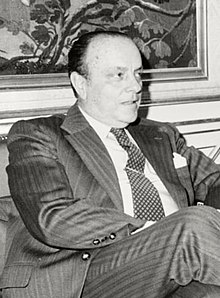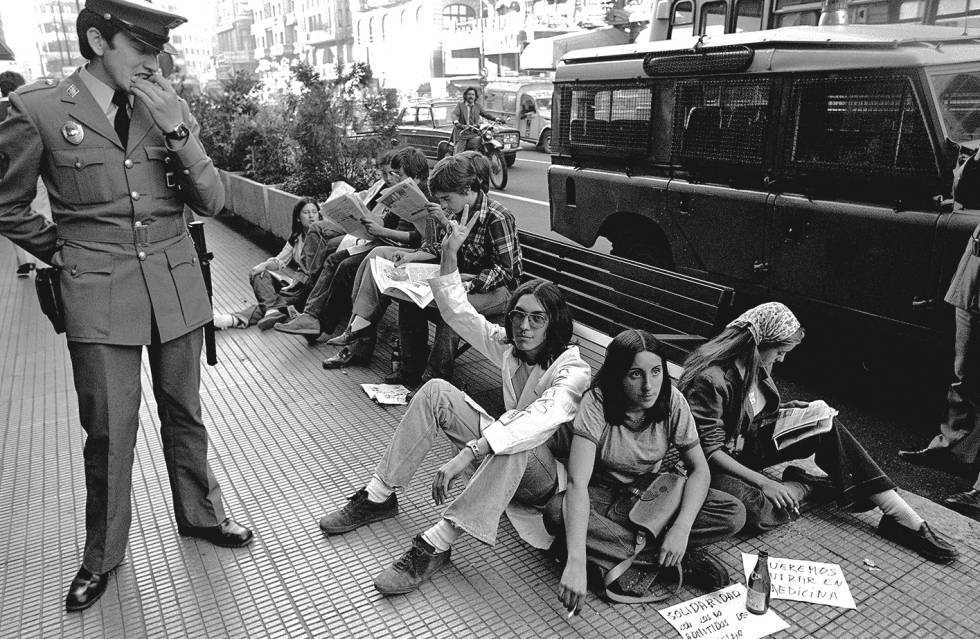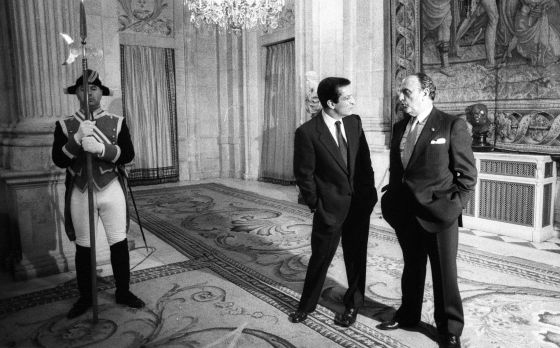1. introduction. Spain from 1974 to 1977.

Alfonso XIV and his wife, Carmen, seen here on his wedding day (March 8th, 1972)
As we have previously seen, Franco's death in 1974 and the new hopes that king Alfonso XIV seemed to convey to the hardcore Francoist supporters, the burocratic system and the armed forces diverted Spaniards' attention from their economy. Apparently, Francoism went on in Spain, even if Franco was dead. However, the "honey moon" period finished as soon it was clear that the so-called "12 February" process (1) was not going to bring any true democracy to Spain. Thus, in the face of the popular protests, the regime became increasingly oppressive, brutal, corrupt, and extravagant (2). On top of that, the 1973 oil crisis hit hard the Spanish economy, and its effects worsened the basic functional failures of the Spanish economy that brought economic bottlenecks, shortages, and inflation and exploded in the "winter of Discontent" of 1974-1975.
Alfonso XIV was perceived by many as a puppet of the so-called "bunker", the nucleus of hardcore Francoists that wanted to preserve Franco's legacy and, at the same time, the suport that Washington and London had been given to the Spanish regime to keep Communism at bay, became more fragile as the promises of Madrid about a democratic reform failed and the international standing of Spain reached new levels of infamy.
Then, a rise in the price of tobacco caused a storm that paralyzed the country when the initial protests against the measure spiralled and led to violent clashes with the Security Forces in Barcelona, Bilbao, Madrid and Valencia. Then, Alfonso XIV forced the resignation of his prime minister, Arias Vanarro, who was replaced by a more reformist minded politician, Manuel Fraga, who announced, on March 24, 1975, the "Spring Reform", a promised reform that would modernize Spain. However, there were several doubts about its true nature and its was perceived as an attempt by Fraga to clean the image of the royal family.
The "Spring Reform", aimed to win back the hearts and the minds of the peasants and working class ad to create new jobs and to shuffle new ife in to the Spanish economy, failed in face of the utter decomposition of the latter by 1977, when inflation reached new levels (20%) and there were one million of unemployed and very angered Spaniards on the streets. Thus, the attempt to bring reform from above and preserve the regime, crashed down in flames.
(1) The so-called "espíritu del 12 de febrero" (the spirit of February 12) was the name given in OTL to a timid reformist process proposed by Carlos Arias Navarro in 1974, the last president of the Francoist Spain, that came to nothing due to its own shortcommings and the resistance of the Francoist hardliners.
(2) In this TL, queen Carmen (born Carmen Martínez-Bordiu y Franco) became a modern version of Queen Marie Antoinette mixed with Tsarina Alexandra of Russia, wife of Nicholas II.



